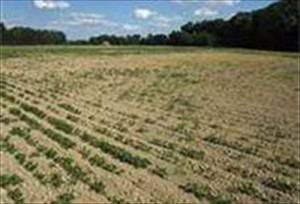Posts Tagged ‘Livestock Feed’
Mid-West Drought to Cause Food Price Increases

As crops shrivel and die from lack of rainfall across the country food prices will undoubtedly go up in the months to come. First will be prices on short cycle commodities like eggs, poultry and milk; followed by spikes in meat and other products that utilize corn or corn by-products in their processing.
Now is the time to stock up on items that could be out of your reach in the future. It is also the time to get serious about growing your own food. In many parts of the country there is still time to plant short term crops like root veggies and salad greens. It is also a good time to plan your fall and winter garden, taking advantage of seeds that may be on sale now.
Take advantage of summer sales on meat and lay aside items that you don’t or can’t raise yourself. I’m keeping an eye on beef and pork sales, both commodities that will be hit hard by the current crop disasters. Even if I do decide to raise a pig this fall it will be months before I can enjoy the fruits of that labor. Filling in gaps now will keep me eating well until my own pig is in the freezer.
If possible, stock up on livestock feed you can use in the next few months, pushing out the sticker shock that’s bound to come. Non-molasses based feeds like lay mash, lay pellets, pig chow and the like will take a big jump in price as the corn and other grain crops wither in the fields. Be cautious with molasses feeds though as they can go rancid if not used in a timely manner.
Speaking of other grains, they too will likely follow suit, or food distributors will take full advantage of increasing prices on corn and jump on the price-hike bandwagon, pushing prices higher to make a bigger profit. Stocking up on wheat, flour, corn meal, rice, barley, millet, etc. could help keep your family eating well over the winter months.
Remember too, grains are long term crops, meaning they take months to go from just planted seeds to a harvestable crop. A decrease in price is not likely to be seen until mid- to late- 2013, if at all. I can still remember the huge jump local fruit prices took during a grocery store strike in the early 2000’s. Prices went from under a dollar a pound for most fruits to almost $2.00 a pound and prices have never come back down. Disaster situations, like the current drought, seem to be a way for food manufacturers to increase prices whether or not the products are directly affected by market conditions. What goes up does not always come down.
This is also a great time to reevaluate how you use the food you grow or buy. Americans throw away millions of dollars worth of food because they buy more than they can use, don’t store it properly or just don’t plan to use it before it goes bad. Buying less per trip could be a solution in managing your grocery budget. Getting creative about using up everything you buy is also another tactic to keep your food budget under control.
At our homestead we try to plan meals that use up bits of leftovers to serve filling and satisfying dishes. It’s amazing how small amounts of leftovers or fresh items can be transformed into an entire meal. Case in point…tonight we will be enjoying a skillet full of beef stroganoff made from a few mushrooms, half an onion, a small amount of chuck I bought in the clearance meat section, beef broth made and frozen last winter and a dab of sour cream. I always have noodles in the pantry and a small piece of French bread and a small salad of fresh greens will round out a perfect budget meal.
Stay tuned, folks. As times get tougher you’ll see a lot more tips on how we stretch our food dollars and make the most of what we buy.
Recent comments
Aenean nonummy hendrerit mauris. Phasellus porta.